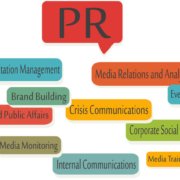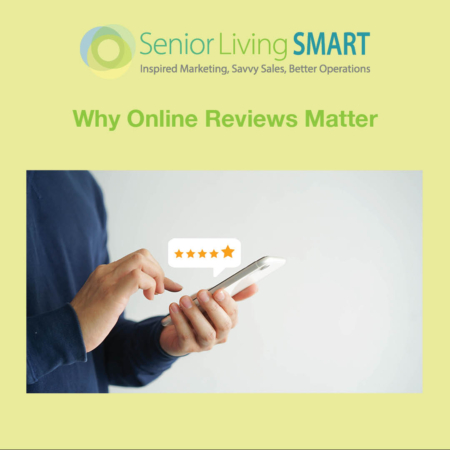Marketing Senior Living Communities: 3 Ways to Keep it Real
One of the biggest challenges when it comes to marketing senior living communities is making sure the community sounds different from all the other ones out there. This is no easy feat since most communities are essentially selling the same thing.
Need some help standing out? Here are three strategies for creating authentic content so that you don’t sound like everyone else.
1. Paint vivid pictures and tell compelling stories.
Most senior living communities talk about the same features and amenities—and in the same boring ways.
- We have a fitness center and lots of fun activities! (Really? So does the gym down the street.)
- We have a chef who makes nutritious and delicious meals! (As opposed to all those chefs making unhealthy, yucky meals?)
- We have the most beautiful grounds and views! (Prove it. Because beauty is in the eye of the beholder.)
While these features are no doubt relevant, you should recast them in a fresh light if you want to differentiate your community from all the others.
Ask yourself…
- What makes your fitness center and activities so special?
- What makes your food so great?
- What makes your grounds so special?
Dig deep. Find the diamonds. What do we mean by that? Well, consider the following blurbs—and the pictures they paint and the stories they tell.
Fitness is a way of life in our community. One of the first things you’ll notice when you visit our community is our on-site fitness center. It’s near the main entrance, and it’s in a gorgeous building with lots of natural light thanks to all the windows. But that’s not why you’ll notice it. You’re going to notice it because you’re going to FEEL the energy pulsing out of it, thanks to always-full classes in things like yoga, Tai Chi, Zumba.
Life is delicious, and so is our food—just ask Barbara. Barbara likes her eggs sunny side up and her coffee strong and black. She loves Reubens for lunch or our chef’s chicken salad—although she’s been known to opt for freshly made sushi when the mood strikes. For dinner, she loves a good roast or hearty pasta with meat sauce. And don’t forget the wine and charcuterie board beforehand that she has in our on-site pub. And did we mention the after-dinner drinks, cake, and conversation? In the warmer weather, you can find Barbara having her meals outside on our lovely patio. In the winter, she likes sitting by the roaring fire with a hot cuppa. She loves attending bread-making class on Saturday mornings and the gingerbread house-decorating party during the holiday season. (Barbara’s grandkids love this as well). But perhaps what Barbara likes best? “Someone else is doing all the cooking and cleanup!” she says with a laugh. “I just get to enjoy!” Wouldn’t you like to be Barbara?
Welcome to your happy place. We have five miles of gorgeous walking trails. In the spring, our gardens bloom with tulips and daffodils. Our resident bird-watching group keeps everyone up to speed on the various activities—from hummingbird sightings in May to hawk watching in September. Our property is filled with flowering dogwoods, mighty oaks, and maples with leaves so red they rival a sunset. Every window has a view—and offers up something new to see, like a chipmunk skittering over a rock wall, a turkey wandering near the woods, even a fox or two! Nature is so incredibly calming and revitalizing. We have plenty of benches to sit and simply “be.”
We’re riffing here, but you get the idea. Describe all the “usual” things like food, activities, and the property itself, but do it authentically so that no one could ever confuse your community with another one down the road.
2. Don’t use stock photos.
Stock photos can’t adequately capture the essence of your community. Not to mention, we often see the same stock photos showing up on competing websites. Don’t do this! Custom photography is an investment, but a worthwhile one.
With custom photography . . .
- You can show real people living real lives in a real environment—your community.
- You won’t have to worry about the same photo showing up on a competitor’s website.
- You can caption the photos and reinforce the fact these are real residents and real staff in your community.
Update your photo library at least once a year (ideally, once a quarter). Photos can and should be repurposed for blog posts, print collateral, and—perhaps most importantly—social media, like Facebook and Instagram.
3. Give people click-worthy info.
If you’re going to write compelling narratives and paint vivid pictures, you need to do so every step of the way on your website. Entice people with interesting calls-to-action (CTAs) and make sure the content you’re serving up is worthy of a click.
For example, in the food/dining blurb we included in our first point above . . . what if you included two CTAs at the end of it: MEET OUR CHEF and EXPLORE OUR SUMMER MENU.
The “Meet Our Chef” CTA would open a lightbox with a video of your chef talking about their culinary point of view and what they love about creating food in your community. Or perhaps it leads to a Q&A blog post, complete with pictures that help your chef tell their story.
For the “Explore Our Summer Menu” call-to-action, this would open an actual menu that highlights different dishes. Think of nice restaurants and their menus—the way they describe ingredients and techniques as well as the pictures of scrumptious-looking dishes. Think of how you feel after you look at one of these yummy-looking menus. That’s the same feeling you’re trying to achieve here.






